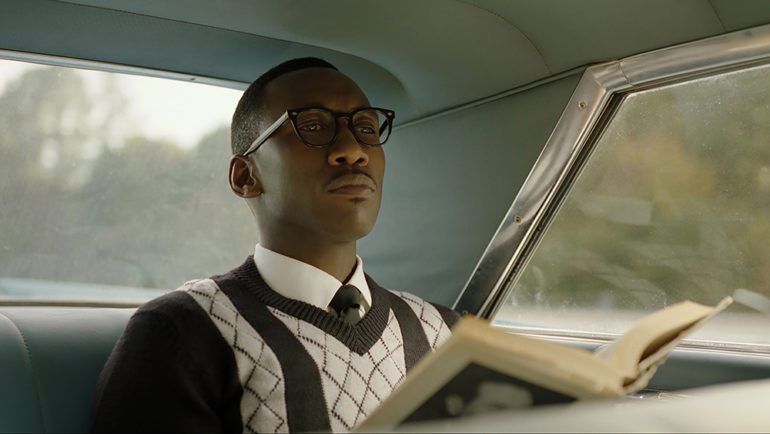Oscar Noise Dominated by Academy Itself, Not the Movies
By Tim Gray
LOS ANGELES (Variety.com) – For most of its 91 years, Oscar has been surrounded by hoopla. Now it’s surrounded by noise, which isn’t the same thing.
For decades, the Academy of Motion Picture Arts & Sciences’ attitude toward the media was: “Don’t talk about the organization; instead, talk about the creative members and their movies.”
But in the internet age, that dictum has been thrown out the window. The Academy is working to adapt to a quickly-changing world. The expansion of membership (to the current 8,300, after 6,600 only two years ago), the change in policies, the too-fast announcement of a “most popular movie” category and then the quick retraction, the announcement of host Kevin Hart which was quickly retracted, the ratings slip, the expensive museum … Oscar contenders are no longer the most interesting aspect of the awards anymore. Whether the members like it or not, the Academy is the star.
And a parallel question is how this newfound attention will affect Oscar outcome.
There are some films that seem like sure bets for Oscar attention: “Black Panther,” “Can You Ever Forgive Me?,” “The Favourite,” “Green Book,” “Roma,” “A Star Is Born,” “The Wife,” etc. etc. There are also many likely contenders (including “BlackKklansman,” “Mary Poppins Returns,” “Vice,” et al.) and admired dark horses (including “Capernaum,” “Crazy Rich Asians,” “Leave No Trace,” “22 July”).
But this year, it’s about more than the Oscar races.
For decades, few people thought about Academy members or the board of governors. But the internet brought a slew of entertainment bloggers, who were looking for new angles in covering Oscar, beyond the “it’s a close race” items.
And many Academy members were traumatized by the Feb. 19, 2012, L.A. Times report that the Academy had 5,765 members, who were 94% Caucasian and 77% male, with a median age of 62.
The #OscarsSoWhite protests began in January 2015, and announced wholesale changes in membership, and Oscar nominations were scrutinized more closely than ever.
The “envelopegate” snafu disrupted the 2017 ceremony. Then there were loud charges of sexual harassment within Academy ranks that were later quietly debunked. There are also ongoing questions about the museum. In August, there was a terse announcement about a game-changing new category followed a month later by a withdrawal that seemed equally rushed. As Variety’s Daniel Holloway reported Aug. 8, ABC got tough with AMPAS after the all-time low ratings in 2018, saying, “You are facing irrelevance.” So AMPAS announced new procedures for the show, with a guaranteed three-hour-maximum, which stirred up questions about which categories would be presented off-camera.
All of this puts added pressure on AMPAS voters. They know that, amid all this upheaval, every vote will be analyzed as a Big Statement.
Voting for the Academy Awards has always been the biggest perk of membership. But even in the best of times, it’s hard to figure out what is “best.” Is Beethoven better than Mozart? Steak better than salmon? They’re all good choices.
For many decades, voters asked themselves if the filmmakers achieved what they set out to do, and whether this film would hold up 25 or 50 years from now. But voters now realize that their votes will be endlessly analyzed on the internet and social media. It shouldn’t matter, but apparently it does to a lot of people.
Voters don’t want to expose the Academy to more accusations that its members are racists, sexist or senile/out of touch. (Yes, there is a lot of ageism and anti-male bias in online criticism of AMPAS these days. After the L.A. Times “expose,” the Academy failed to defend longtime members.)
AMPAS is trying to figure out how to deal with all of this newfound attention. Some of this is the Academy’s own fault. Ever since its 1927 start, the organization promoted itself as the symbol of Hollywood (glamour, magic, excitement!) In the 21st century, that image turned out to be a problem: As the symbol of Hollywood, AMPAS is held accountable for hiring practices, greenlight decisions and too-prevalent industry bullying and harassment.
As with many other longtime organizations, AMPAS wants to enjoy its reputation as well-established and reliable. But it’s also trying to prove it’s hip, very much a part of the 21st century.
Amid all this attention, AMPAS officials often depend on their decades-old reaction: silence, working on the theory “We don’t want to dignify that with a response” or “That’s nobody else’s business.”
In a -Twitter world, sometimes silence is good. But it also invites speculation — often idiotic — from a flood of entertainment bloggers, who pronounce theories about members and execs as fact, pontificating about what “they” need and “they” want, even though many of these bloggers have never met any filmmakers, much less AMPAS members.
One of the goals in the 1927 creation of the Academy was to draw attention to moviegoing, and the year’s best movies in particular. And 2018 has produced a slew of worthwhile films. But with dwindling TV ratings and too much online attention to the Academy itself and to the campaign process, it’s become the tail wagging the dog and the merits of the year’s films too often get lost.

